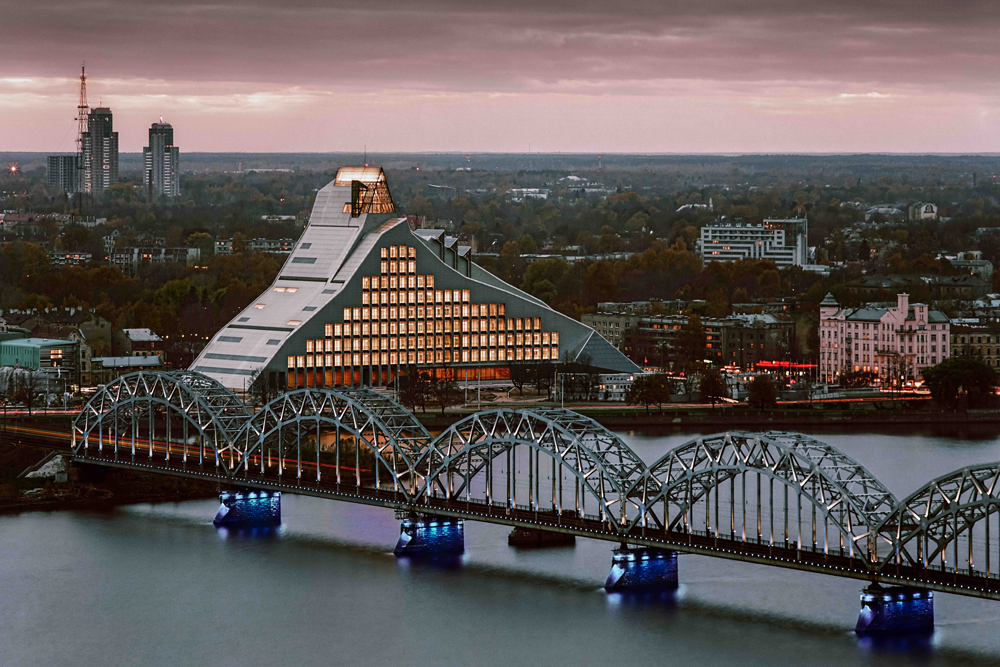
The year 2015 is all about reimagining old icons in new ways: from Paris to Singapore, architects are transforming existing spaces to the surprise and delight of visitors.
Take, for instance, the Eiffel Tower, or London’s Tower Bridge, both of which have lately been outfitted with impressive new glass floors, providing never-before-seen perspectives of much-loved cities that seem to have been viewed from every possible angle.
Sydney is following the lead of New York City’s High Line elevated park, repurposing its own abandoned railway line into a beautiful new public space. Starchitects are cashing in on this trend in a big way: Thomas Heatherwick embedded staggering glass fixtures into a Victorian-era building in England’s new Bombay Sapphire Distillery, while Renzo Piano improved on Harvard’s existing art museums to create a dazzling new complex for the university.
That’s not to say there’s nothing new-new on the horizon. Gleaming cultural spaces are descending upon cities not previously known for their arts scenes, like Orlando, FL, and Kraków, Poland—in a few years, perhaps we’ll find ourselves mentioning them in the same breath as New York and Paris. Sound far-fetched? Visit the Dr. Phillips Center for the Performing Arts in Orlando and the ICE Kraków Congress Centre before making up your mind.
Even hard-to-impress design connoisseurs will be wowed by some of the outlandish new buildings that have recently opened or are on the verge of completion: The Netherlands’s horseshoe-shaped marketplace comes to mind, as does China’s Shanghai Tower, poised to become the world’s second-tallest building, and Latvia’s confounding new national library, the Castle of Light.
Whether you’re prone to nostalgia or keep an eye firmly fixed on the future, there are plenty of exciting new attractions to add to your travel wish list.
Eiffel Tower, Paris
How do you update a 125-year-old landmark? For the Eiffel Tower, the answer came in the form of a glass floor from the 187-foot-high first-floor level. Visitors can now be transfixed by not only the city views unfurling all around them, but also those below them—in the latest example of a recent trend that includes the Grand Canyon’s Skywalk and Chicago’s Willis Tower. The first floor’s $38 million renovation includes restaurants, solar panels, shops, and a museum. But the highlight remains this new see-through floor. So next time you’re at the Eiffel Tower, keep an eye out lest you trip over selfie-takers lying down on the glass.
Goods Line, Sydney
New York City’s wildly successful High Line elevated park has set off a global chain reaction of inventive urban spaces reclaiming run-down zones. Case in point: Sydney’s planned corridor from Ultimo (by the also-new Frank Gehry–designed business school at the University of Technology, Sydney) to Darling Harbour. The 800-foot-long North Section, to be revealed first, will feature cafés and a new Mary Ann Street amphitheater for outdoor events. Look for an early 2015 opening, in conjunction with the unveiling of the Gehry building.
Bombay Sapphire Distillery, Laverstoke, England
What the Guinness Storehouse is to Ireland’s favorite stout is what the Thomas Heatherwick-designed Bombay Sapphire Distillery aspires to be for England’s popular gin brand. The celebrated British starchitect constructed sinuous glass houses that seem to sprout from the walls of the historic paper mill he was tasked to revamp. It’s a whimsically beautiful home for a product that, as some critics point out, is short on heritage (Bombay Sapphire gin only launched only in 1987). Still, the distillery is sure to be a hit with travelers who may not have otherwise ever discovered the village of Laverstoke.
Canadian Museum for Human Rights, Winnipeg
Leave it to the Canadians to come up with an entire museum dedicated to human rights. Jazzing up the Winnipeg skyline with a swirly glass design culminating in a single gleaming spire, the 260,000-square-foot ode to tolerance and hope opened in September 2014. Inside, you’ll find thought-provoking exhibits encompassing the Holocaust, ethnic cleansing in Bosnia, and leaders like Nelson Mandela and Gloria Steinem.
Markthal Rotterdam, Netherlands
It’s a building that appears to defy logic at first glance: a giant horseshoe-shaped arch in Rotterdam houses 228 apartments inside, and underneath, you’ll find the world’s funkiest covered market. Officially unveiled in October 2014, the space beneath the 130-foot roof showcases 100 produce stalls and dozens of restaurants and shops, making it the city’s hottest new gathering place. A massive 36,000-square-foot mural by Arno Coenen and Iris Roskam called Cornucopia—with a rainbow of colorful fruits, vegetables, and other food finds—covers the entire inner arch. The humble food market has never looked so cool.
More from Travel + Leisure:
More Must-Reads from TIME
- How the Economy is Doing in the Swing States
- Democrats Believe This Might Be An Abortion Election
- Our Guide to Voting in the 2024 Election
- Mel Robbins Will Make You Do It
- Why Vinegar Is So Good for You
- You Don’t Have to Dread the End of Daylight Saving
- The 20 Best Halloween TV Episodes of All Time
- Meet TIME's Newest Class of Next Generation Leaders
Contact us at letters@time.com